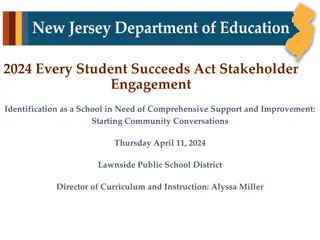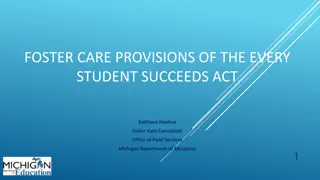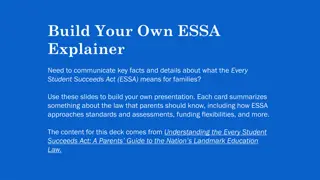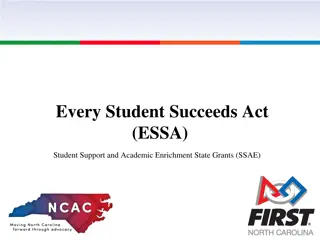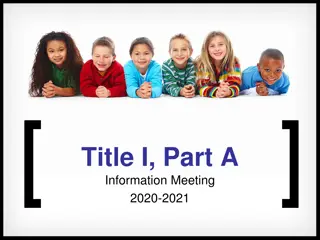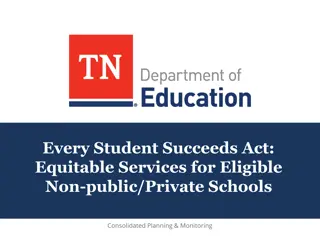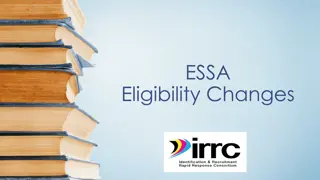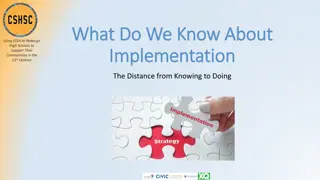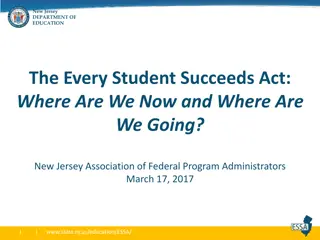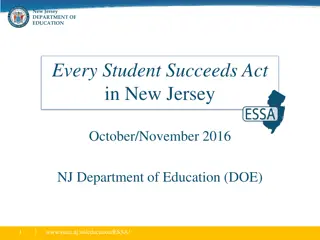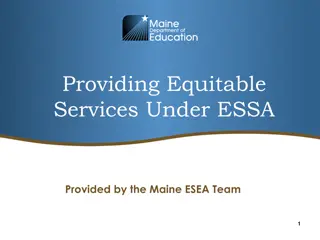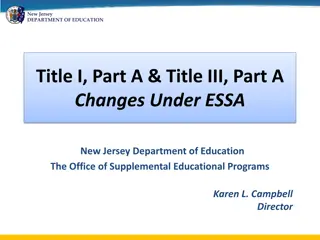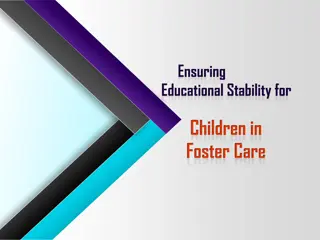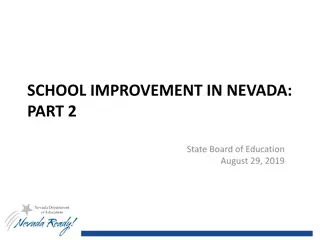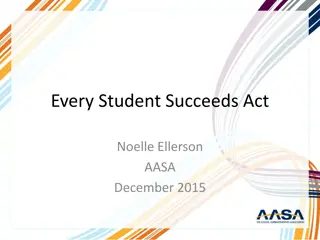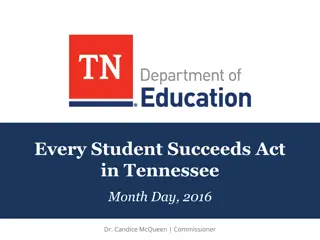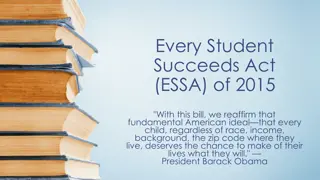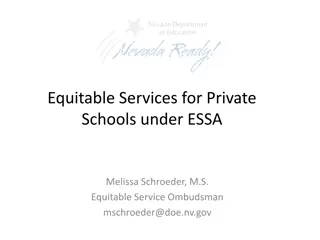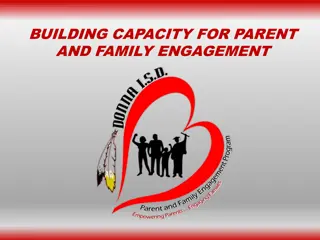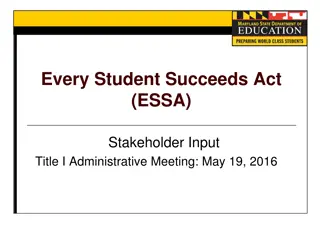The Every Student Succeeds Act (ESSA) of 2015
The Every Student Succeeds Act (ESSA) is a civil rights law that stems from the 1965 Elementary and Secondary Education Act (ESEA) focusing on equity, transparency, stakeholder engagement, and accountability at the school level. ESSA requires states to have college and career readiness standards, assess students in various subjects, disaggregate student data, and identify schools in need of support. Pennsylvania's ESSA plan includes assessments like PSSAs and Keystone Exams, support for effective educators, promoting equity for all students, and focusing on school improvement.
Download Presentation

Please find below an Image/Link to download the presentation.
The content on the website is provided AS IS for your information and personal use only. It may not be sold, licensed, or shared on other websites without obtaining consent from the author.If you encounter any issues during the download, it is possible that the publisher has removed the file from their server.
You are allowed to download the files provided on this website for personal or commercial use, subject to the condition that they are used lawfully. All files are the property of their respective owners.
The content on the website is provided AS IS for your information and personal use only. It may not be sold, licensed, or shared on other websites without obtaining consent from the author.
E N D
Presentation Transcript
Every Student Succeeds Act 101 Developed by PSEA ESSA Workgroup for PSEA Local Presidents December 2018
What is ESSA? ESSA = The Every Student Succeeds Act ESSA at its core is a civil rights law. ESSA is the 2015 reauthorization of the ESEA = Elementary and Secondary Education Act ESEA is the 1965 landmark civil rights law enacted by President Johnson seeking to ensure equitable educational opportunities for all students. 2
What are the main purposes of ESSA? Title I Identifies lowest performing schools in poverty to support improvement Title II Provides funding and criteria for educator professional learning Title III Provides funding for language Instruction for English Learners Title IV Provides funding and criteria for well-rounded education Other Titles Title V Rural education Title VI Indian, Native Hawaiian, and Alaska Native Education Title VII Funding for schools impacted by Federal lands (and hence limited property tax base) Title VIII General Provisions Title IX Education for the Homeless and Other Laws 3
What does ESSA do? Focuses on: Equity Transparency Stakeholder engagement Multiple measures of accountability Accountability for schools, not districts Moving control back to the states and away from the federal government 4
What does ESSA require? Every state must: Have college and career ready standards Assess students for math, language arts, and science Disaggregate student data by subgroup Report data with transparency Identify lower-performing schools in need of support and improvement (comprehensive; targeted) 5
Whats in PAs ESSA Plan? Assessments PSSAs, Keystone Exams Supporting Effective Educators Title II professional learning; clinical residency Supporting All Students (Equity) School climate; well-rounded education Accountability, Support, School Improvement 6
Accountability under ESSA States must use Academic Indicators and at least one School Quality indicator to identify schools in need of Comprehensive or Targeted supports and improvement: Lowest performing 5% of Title I schools Any high school with graduation rate at or below 67% Title I schools with chronically low-performing student group/s PA indicators: Academic: Growth; Proficiency; Graduation rates; English Language Proficiency School Quality: Career readiness; Chronic absenteeism 7
PA Process to Identify Schools Step 1: Preliminary identification based on low academic achievement and low growth Step 2: Evaluation of performance for following indicators: Substantially Weighted Indicators (1 or both) High school graduation rate; Progress in ELP School Quality Indicators(both) Step 3: ID additional high schools with graduation rate at or below 67 percent (all high schools, not just Title I) 8
4-year Cycle of Improvement To exit CSI, A-TSI identification and not be identified for more rigorous interventions after 4 years, schools must: Show continued progress on the academic achievement indicator and on the school quality indicator(s) Exceed the identification standards for CSI that were applied the year of initial identification Submit an updated improvement plan Participate in PDE-sponsored technical assistance activities 9
ESSA in PA: Timeline Late Fall 2021 July 1, 2019 January 2018 November- December 2018 December 2015 New cohort of CSI schools identified; CSI, A-TSI School Improvement Plans to be completed, approved PA Consolidated State Plan (ESSA Plan) approved by US Ed Dept. ESSA signed into law Future Ready PA Index goes live; CSI, A-TSI schools identified 4-year improvement cycle begins again Improvement Cycle; demonstrate progress CSI, A-TSI - needs assessment; develop improvement plans Stakeholder engagement; development of PA Plan begins Data collection; state planning process continues Exit (or not) CSI, A-TSI status Winter/Spring 2019 2017 2018 2016 - 2017 2019-2022


